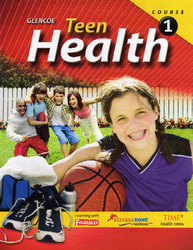
Teen Health Course 1Chapter 8: Growth and DevelopmentStudent Web Activities - Teacher CenterLesson 1 Answers 1. Hormones cause the physical and emotional changes that occur in puberty. 2. Puberty usually starts between the ages of 9 and 13 for girls and between the ages of 10 and 16 for boys. 3. Signs of puberty in females include:
4. Signs of puberty in males include:
5. Some emotional changes that occur during puberty include:
Additional Resources for Teachers Below are some Web sites that offer additional information on puberty that you can point your students towards. Several of these sites have forums, peer counseling, and a doctor that teens can consult.
Lesson 3 Answers 1. DNA looks like a twisted ladder called a “double helix.” 2. The rungs of the DNA ladder are called genes, and there are four kinds: G (Guanine), A (Adenine), T (Thymine), and C (Cytosine). 3. Genes are instruction manuals for the cells of the body. They contain instructions for building proteins that form things like the pigment in eyes and the hemoglobin in blood. 4. Chromosomes are packages of DNA. All DNA is organized into two sets of 23 chromosomes each. Each human has two complete sets of 23 chromosomes, or 46 chromosomes total. 5. Sex cells (eggs and sperm) have only 23 chromosomes each. When a sex cell from a male (sperm) and a sex cell from a female (egg) combine to create a child, they produce one complete set of 46 chromosomes. This means the baby gets half its traits from its mother and half from its father. Additional Resources for Teachers Below are some Web sites that offer additional information on genetics. It could be fun to talk about dominant versus recessive genes and show students how to predict which traits would appear in a child.
|  |















